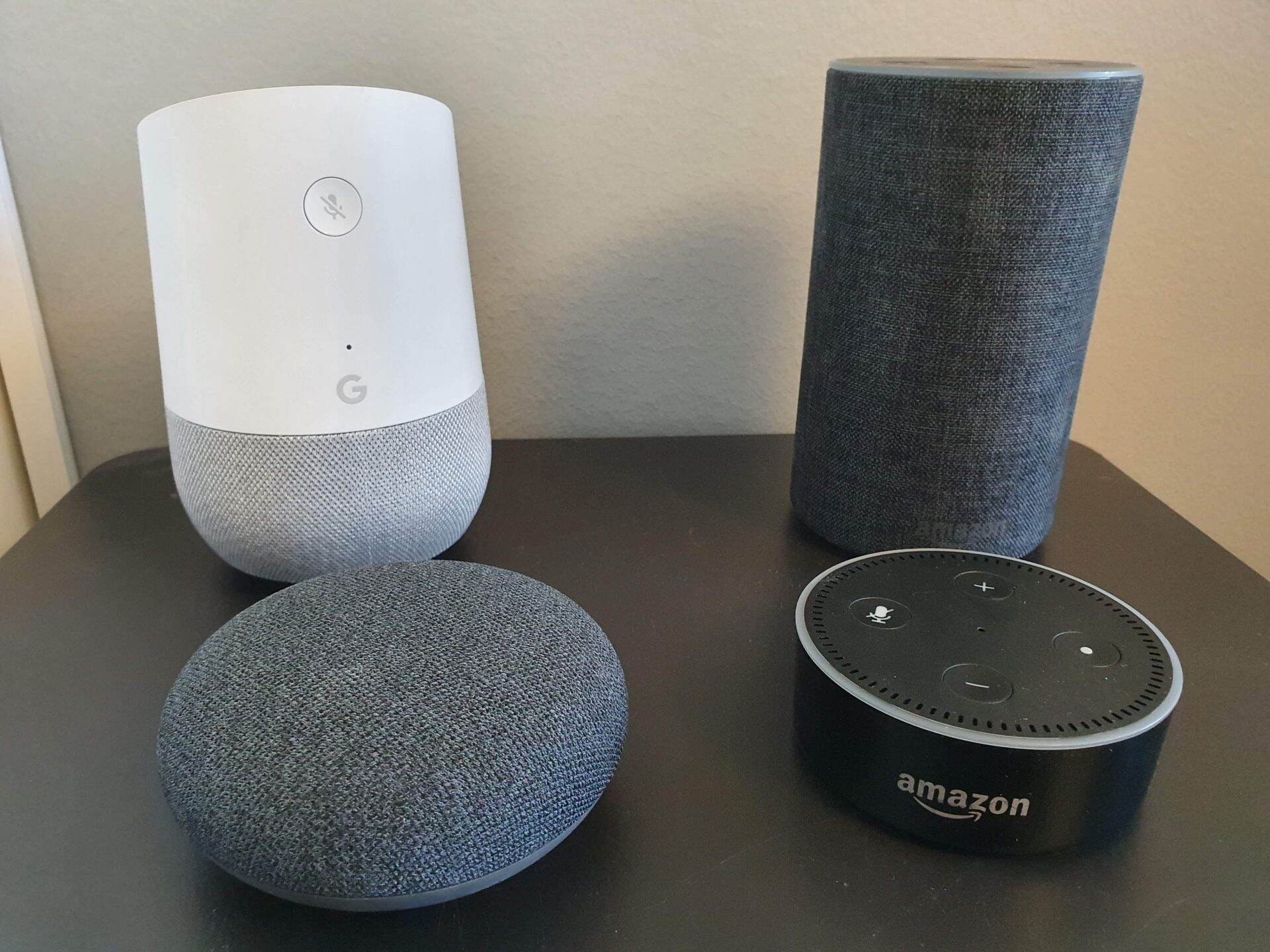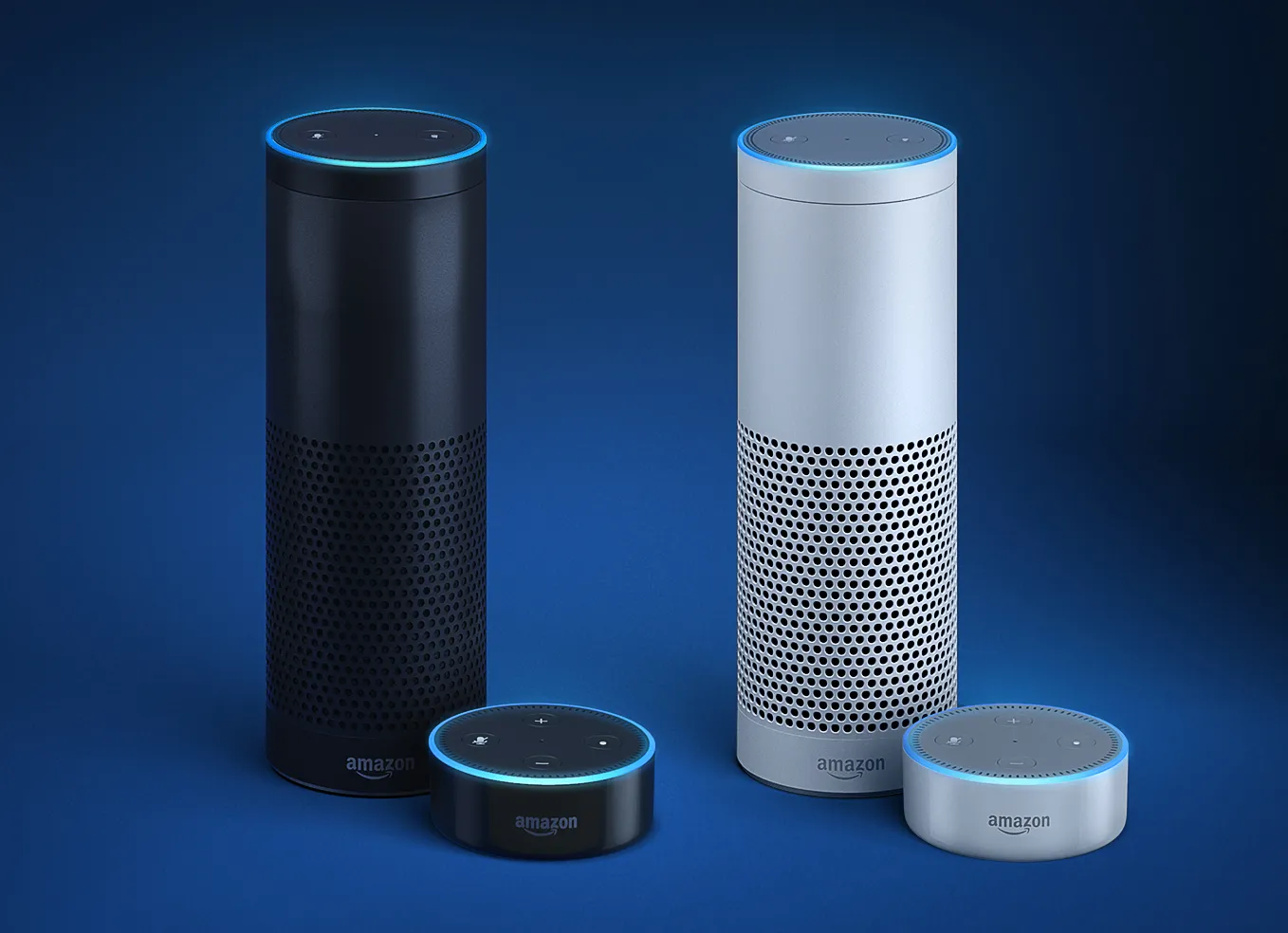Home>Home Appliances>Home Automation Appliances>Which Is Better: Google Home Vs. Amazon Echo


Home Automation Appliances
Which Is Better: Google Home Vs. Amazon Echo
Published: December 23, 2023
Discover the best home automation appliances with our comparison of Google Home and Amazon Echo. Find out which smart speaker is right for you.
(Many of the links in this article redirect to a specific reviewed product. Your purchase of these products through affiliate links helps to generate commission for Storables.com, at no extra cost. Learn more)
Introduction
Introduction
As the demand for smart home devices continues to rise, the market is flooded with a plethora of options, each offering its own set of features and capabilities. Among the leading contenders in the realm of smart speakers are Google Home and Amazon Echo. These two devices have revolutionized the way we interact with our living spaces, offering seamless integration with smart home appliances, entertainment options, and much more. In this comprehensive guide, we will delve into the key aspects of both Google Home and Amazon Echo to help you determine which smart speaker best suits your needs and preferences.
Before we embark on this exploration, it’s important to note that both Google Home and Amazon Echo are equipped with voice assistants that can perform a wide array of tasks, from playing music and setting reminders to controlling smart home devices and providing real-time information. However, each device boasts its own unique features and functionalities, making it essential to carefully evaluate their respective strengths and weaknesses.
Whether you’re a tech enthusiast looking to enhance your home with cutting-edge automation or a casual user seeking a convenient way to streamline daily activities, understanding the nuances of Google Home and Amazon Echo is crucial in making an informed decision. Join us as we embark on a journey to unravel the distinctive attributes of these smart speakers, empowering you to make the best choice for your smart home ecosystem.
Design and Appearance
Key Takeaways:
- Google Home and Amazon Echo offer sleek designs, seamless smart home integration, and impressive sound quality. They cater to diverse user preferences, making them versatile additions to any smart home setup.
- Google Home excels in seamless integration with Google services, customizable design options, and multi-room audio capabilities. Amazon Echo offers a wide array of third-party skills, diverse audio configurations, and visual interactions, catering to unique user needs.
Design and Appearance
When it comes to the design and appearance of smart speakers, both Google Home and Amazon Echo offer sleek and modern aesthetics that seamlessly blend into various home decor styles. Google Home features a minimalist yet elegant design, characterized by a cylindrical shape with a slanted top that houses the touch-sensitive control panel. The base of the device is customizable, allowing users to swap out the standard fabric cover with different colors and materials to suit their preferences. This design versatility enables Google Home to effortlessly complement any living space, from contemporary apartments to traditional homes.
On the other hand, Amazon Echo boasts a more utilitarian appearance, with a taller build and a fabric or wood veneer finish, depending on the model. The Echo also offers a variety of design options, including the Echo Dot, which is compact and unobtrusive, making it ideal for smaller spaces. The Echo Plus, with its rounded edges and premium fabric finish, exudes a sense of sophistication, while the Echo Show features a built-in screen for enhanced visual interactions.
Both Google Home and Amazon Echo are designed to be visually appealing and unobtrusive, allowing them to seamlessly integrate into any room without overpowering the existing decor. Whether you prefer the understated elegance of Google Home or the functional versatility of Amazon Echo, both devices are crafted to enhance the aesthetic appeal of your home while delivering exceptional smart home functionality.
Voice Assistant Capabilities
Voice assistant capabilities are at the core of the user experience with smart speakers, and both Google Home and Amazon Echo excel in this domain. Google Home is powered by the Google Assistant, a robust AI-driven voice assistant that leverages Google’s extensive knowledge graph to provide accurate and contextually relevant responses to user queries. The Google Assistant is adept at understanding natural language and can perform a wide range of tasks, from answering general knowledge questions and providing weather updates to managing calendar events and setting reminders. Its ability to seamlessly integrate with other Google services, such as Google Calendar and Gmail, adds a layer of convenience for users deeply entrenched in the Google ecosystem.
Amazon Echo, on the other hand, is equipped with Alexa, Amazon’s voice assistant known for its expansive skill set and compatibility with a myriad of third-party applications and smart home devices. Alexa boasts a robust library of skills, which are essentially voice-activated apps that enable users to perform tasks ranging from ordering food and requesting rides to controlling smart home appliances and playing games. The Echo’s far-field voice recognition technology ensures that Alexa can accurately hear and respond to commands from across the room, even in noisy environments.
Both the Google Assistant and Alexa have their unique strengths, with the former excelling in leveraging Google’s vast knowledge base and the latter offering a wide array of third-party integrations and skills. Whether you prioritize seamless integration with Google services or seek a voice assistant with a diverse skill set, both Google Home and Amazon Echo offer compelling voice assistant capabilities that cater to different user preferences and needs.
Smart Home Integration
Smart home integration is a pivotal aspect of modern smart speakers, and both Google Home and Amazon Echo offer robust support for controlling and managing a wide range of smart home devices. Google Home is compatible with a plethora of smart home brands and devices, including popular options such as Philips Hue, Nest, and Samsung SmartThings. The seamless integration with Google’s ecosystem allows users to control their smart home devices using natural language commands, creating a cohesive and intuitive smart home experience.
Amazon Echo, powered by Alexa, also excels in smart home integration, boasting compatibility with an extensive array of smart home devices and brands. From smart lighting and thermostats to security cameras and door locks, the Echo serves as a central hub for controlling and managing various aspects of a connected home. Additionally, the Echo Plus features a built-in hub that simplifies the setup process for compatible smart home devices, streamlining the integration experience for users.
Both Google Home and Amazon Echo offer comprehensive smart home integration, allowing users to effortlessly control and automate their connected devices using voice commands or dedicated smartphone apps. Whether you’re looking to create custom routines, adjust lighting and temperature settings, or monitor security cameras, both smart speakers provide the foundation for building a seamlessly interconnected smart home ecosystem.
Consider your existing smart home devices and which ecosystem they are compatible with. Google Home works well with Google products, while Amazon Echo is better for those who use Amazon services. Choose the one that integrates seamlessly with your current setup.
Sound Quality
When it comes to sound quality, both Google Home and Amazon Echo deliver impressive audio performance, catering to a variety of listening preferences and environments. Google Home features a high-excursion speaker with a dual-passive radiator design, delivering rich and clear sound across a wide frequency range. The balanced audio output makes Google Home suitable for casual music listening, podcast playback, and voice responses from the Google Assistant. Additionally, users have the option to pair multiple Google Home devices for a synchronized audio experience, creating a multi-room audio setup for immersive sound throughout the home.
Amazon Echo, available in various models such as the Echo, Echo Plus, and Echo Studio, offers diverse audio configurations to suit different audio preferences. The Echo boasts a 0.8″ tweeter and a 3″ woofer, delivering crisp vocals and dynamic bass, while the Echo Plus enhances the audio experience with a 3″ neodymium woofer and increased power for room-filling sound. For audiophiles seeking a premium audio experience, the Echo Studio features a 5-speaker system with Dolby Atmos technology, producing immersive 3D audio that adapts to the acoustics of the room.
Whether you prioritize balanced sound output for everyday listening or seek a high-fidelity audio experience for music and entertainment, both Google Home and Amazon Echo offer versatile sound quality options to meet diverse user preferences. From compact and portable designs to immersive multi-speaker setups, these smart speakers cater to a wide spectrum of audio needs, enhancing the overall smart home experience through rich and immersive sound.
Read more: Alexa Or Google Home: Which Is Better
Price and Availability
When considering the price and availability of smart speakers, both Google Home and Amazon Echo offer a range of options to accommodate different budgetary constraints and regional availability. Google Home is available in multiple iterations, including the standard Google Home, Google Home Mini, and Google Home Max. The Google Home Mini, with its compact form factor and affordable price point, serves as an entry-level option for users seeking a budget-friendly smart speaker. The Google Home Max, on the other hand, caters to audiophiles and enthusiasts with its premium sound quality and larger footprint. These options provide users with the flexibility to choose a device that aligns with their specific needs and preferences.
Amazon Echo also offers a diverse lineup, featuring the standard Echo, Echo Dot, Echo Plus, Echo Studio, and Echo Show, each tailored to different use cases and audio requirements. The Echo Dot, known for its small size and affordability, serves as an accessible entry point into the Amazon Echo ecosystem, while the Echo Studio caters to users seeking a high-fidelity audio experience. The Echo Show, equipped with a built-in display, adds a visual element to voice interactions, making it ideal for tasks such as video calling and viewing visual content.
Both Google Home and Amazon Echo devices are widely available through various retail channels, online marketplaces, and official brand stores, ensuring broad accessibility for consumers across different regions. Additionally, periodic promotions and discounts further enhance the affordability of these smart speakers, making them accessible to a wide range of users with varying budgetary considerations.
Conclusion
After examining the key attributes of Google Home and Amazon Echo, it’s evident that both smart speakers offer compelling features and capabilities, catering to diverse user preferences and smart home requirements. Google Home impresses with its seamless integration with Google’s ecosystem, leveraging the power of the Google Assistant to provide accurate responses and personalized assistance. The customizable design options and multi-room audio capabilities further enhance its appeal, making it a versatile addition to any smart home setup.
On the other hand, Amazon Echo, powered by Alexa, excels in its extensive library of skills and third-party integrations, offering users a wide array of voice-activated functionalities and smart home device compatibility. The diverse range of Echo models, each tailored to specific audio preferences and use cases, provides users with the flexibility to choose a device that aligns with their unique needs, whether it’s compact and affordable or premium and feature-rich.
Ultimately, the choice between Google Home and Amazon Echo hinges on individual preferences, existing smart home setups, and desired voice assistant capabilities. Whether you prioritize seamless integration with Google services, customizable design options, and multi-room audio, or seek a wide array of third-party skills, diverse audio configurations, and visual interactions, both Google Home and Amazon Echo offer compelling options for enhancing your smart home experience.
As the smart speaker landscape continues to evolve, it’s important to consider the specific features and functionalities that align with your lifestyle and preferences. Whether you’re a music enthusiast, a smart home automation aficionado, or a casual user seeking convenient voice assistance, both Google Home and Amazon Echo stand as pillars of innovation, enriching the way we interact with our homes and the world around us.
Frequently Asked Questions about Which Is Better: Google Home Vs. Amazon Echo
Was this page helpful?
At Storables.com, we guarantee accurate and reliable information. Our content, validated by Expert Board Contributors, is crafted following stringent Editorial Policies. We're committed to providing you with well-researched, expert-backed insights for all your informational needs.















0 thoughts on “Which Is Better: Google Home Vs. Amazon Echo”